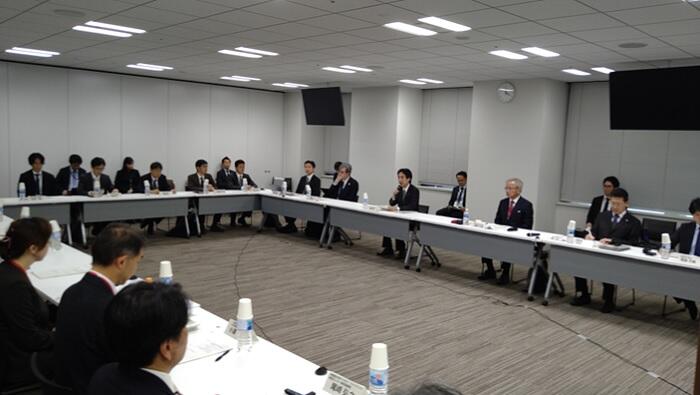Revision of the plan for the Fusion Energy Innovation Strategy has been revealed. New initiatives proposed include establishing a Cabinet Office task force to address various issues related to social implementation, creating a roadmap for achieving a world-leading power generation demonstration, research and development of prototype reactors through engineering design and full-scale technology development, increasing the number of Japanese staff at the ITER Organization and actively participating in procurement, and promoting innovation hubs at institutions such as National Institutes for Quantum Science and Technology (QST). After adding details such as specific implementation timelines, the plan will be officially decided by the Integrated Innovation Strategy Promotion Council.
Minister of Science and Technology Policy Minoru Kiuchi stated, "Along with securing a sufficient budget for creating innovation hubs and prototype reactor development, I will personally lead multilateral diplomacy to advance international cooperation."

Fusion energy is considered a next-generation clean energy, highly anticipated as a solution to environmental and energy problems. As a result, governments and companies worldwide are advancing efforts toward research, development, and commercialization.
In April 2023, the government formulated the Fusion Energy Innovation Strategy as Japan's first national strategy for fusion. Viewing fusion energy as a new industry, the government has been developing an environment for industrialization, including establishing an industry council in March 2024. Meanwhile, other countries are also promoting fusion energy research and development as national policy, with the United States announcing its own national strategy. Japan is steadily advancing its approach, involving the ITER Project, Broader Approach (BA) activities, and prototype reactor development, while also promoting bilateral cooperation with the United States, China, and South Korea through academic joint research and personnel exchanges. The G7 Summit outcome document included establishing a G7 working group and promoting regulatory harmonization among G7 countries.
The current revision proposal updates descriptions to reflect domestic and international situations and incorporates new initiatives.
A task force will be established in the Cabinet Office to evaluate the current technology readiness level and consider issues that need to be addressed for social implementation, such as how the entity responsible for the implementation should operate and site selection processes.
A Cabinet Office official stated, "We want to establish this as soon as possible." Additionally, fusion will be positioned as an important area in the government's new international standardization strategy, strengthening public-private efforts toward international standardization. This year's patent application trend survey (which is conducted annually by the Japan Patent Office) will include fusion as a survey target to understand domestic and international technology trends and consider support measures for supply chain development.
The timeframe for a power generation demonstration has been officially revised from "around 2050" to the 2030s, and a roadmap including necessary public and private initiatives will be created. Optical design and full-scale technology development of prototype reactors will be accelerated to verify ITER-sized prototype reactors. A milestone-type program will be established in the second phase of the Moonshot Research and Development Program, for which applications will be solicited in public. Active participation in procurement for the ITER Organization will be promoted, and the number of Japanese staff at the ITER Organization will be increased to acquire core technologies. Strengthening the funding functions of New Energy and Industrial Technology Development Organization (NEDO), Japan Science and Technology Agency (JST), QST, and other organizations will be considered.
In addition to Japan-US and Japan-EU cooperation, multilateral and bilateral cooperation will be strengthened with the G7, IAEA, Japan-UK, and Japan-Canada. The systems at QST, the National Institute for Fusion Science (NIFS), and the Institute of Laser Engineering at the University of Osaka will be enhanced, bringing together academia and private companies to establish systems for technological development and test facilities for full-scale development that can also be made available to startups. With the NIFS as the core institution, a comprehensive education system will be built through inter-university collaboration, utilizing joint research networks and frameworks for cooperation with various countries. To promote collaboration between graduate education and large-scale research facilities both in Japan and overseas, human resource development will be implemented in collaboration with QST, utilizing the ITER project and JT-60SA.
According to the Cabinet Office, details such as the timeline for creating the roadmap and what the task force will compile by when will be added to this draft proposal before it is officially decided by the Integrated Innovation Strategy Promotion Council.
This article has been translated by JST with permission from The Science News Ltd. (https://sci-news.co.jp/). Unauthorized reproduction of the article and photographs is prohibited.




